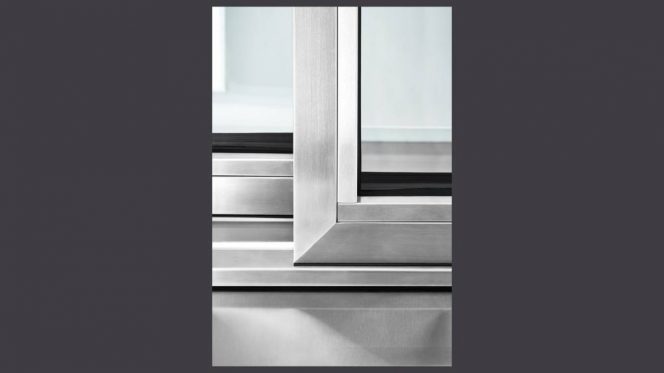Metal doors and gates, iron doors, aluminium or PVC profiles: not all doors have the same needs. In fact, depending on the particular characteristics, a door will need a lock with features which will cover its weak points, enhance its strengths and adapt to its structure.
Types of metal doors and locks
This is actually a very large category, which includes under this name different doors in terms of characteristics and structure.
1. LIGHTWEIGHT PROFILES MADE OF ALUMINIUM, WOOD OR PVC
These are mostly French doors or passageway doors, which are used frequently and therefore require a lock which is light enough to make it easy to open and close them. Locks suitable for profiles of this type generally have an elongated shape, reduced thickness and limited overall size. Generally, the most suitable are the multi-point and single-point mortise types.
How to increase the security of lightweight profiles
Once a multi-point or single-point mortise lock is installed for metal profiles, possibly preferring versions which have the visible parts made of stainless steel, in order to protect them from atmospheric agents in the best possible way, it will be possible to significantly increase their security by applying a bar to the metal section the deadbolts of which, instead of on the jamb, as in the case of the mortise lock, blocks on the ground or in the wall to the sides of the door.
Some types of bars, in fact, are designed for mounting on lightweight metal profiles and can therefore reinforce and defend doors, shutters, blinds and French doors.
The Viro Universal Spranga, for example, in the mechanical or electronic versions, offers a high level of anti-break-in and anti-drill protection and provides a simple application both horizontally and vertically, to best adapt to every need.

Application with fixing to the wall 
Application with ground fixing
As needed, it can also be shortened or, if integrated with a special kit, extended. It works with any type of profile cylinder and, in its electronic version, is equipped with a built-in anti-theft device that alerts in real time by telephone, in the event of attempted break-in.
2. HEAVY-DUTY SECTIONS MADE OF IRON OR METAL
These are mainly for manual doors, generally external, sliding or hinged, heavier and more massive than the previously mentioned lightweight sections.
How to increase the safety of heavy-duty sections
Also in this case, the mortise locks are suitable which, however, due to the more massive structure of this type of door, must have dimensions, depth and thickness of the larger deadbolts.
Some examples are:

item 8513

item 8506
- The mortise lock with pivoting hook Viro (item 8513) suitable for hinged and sliding doors and the mortise lock with Viro swing deadbolt (item 8506) suitable for hinged doors.
The peculiarity of these locks is that of providing a self-reinforcing counterbalance in case of attacks to the deadbolt or to the hook with a hammer, in addition to having the deadbolt / hook reinforced by steel plates joined together by strong riveted anchors.

item 8516

item 8537
- The mortise lock with Viro reversible self-locking latch suitable for swing doors. (item 8537 for profiled cylinders and item 8516 for round cylinders).
The self-locking latch has hardened and anti-cut steel pins.
The hold-open function (door that remains open when desired), activated by the key, also makes passage easier in those cases where the door is in busy places.
For further information, we recommend viewing these locks on the Viro website.




I’m planning to have metal door for our house. Hope this lasts long. Thanks for sharing about metal door and locks.